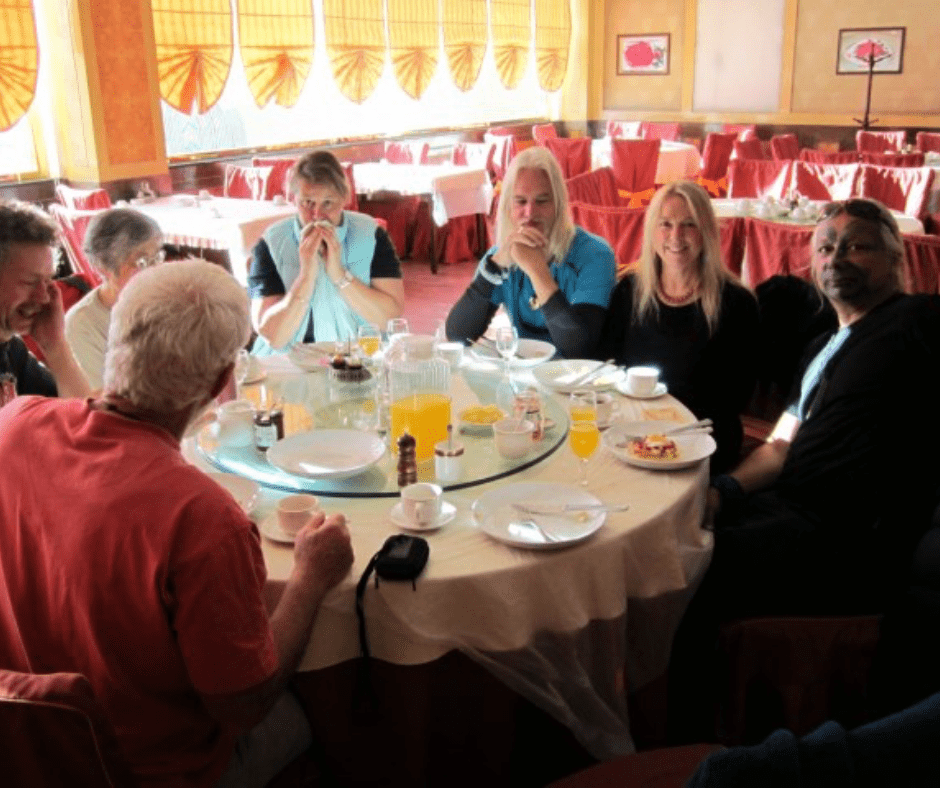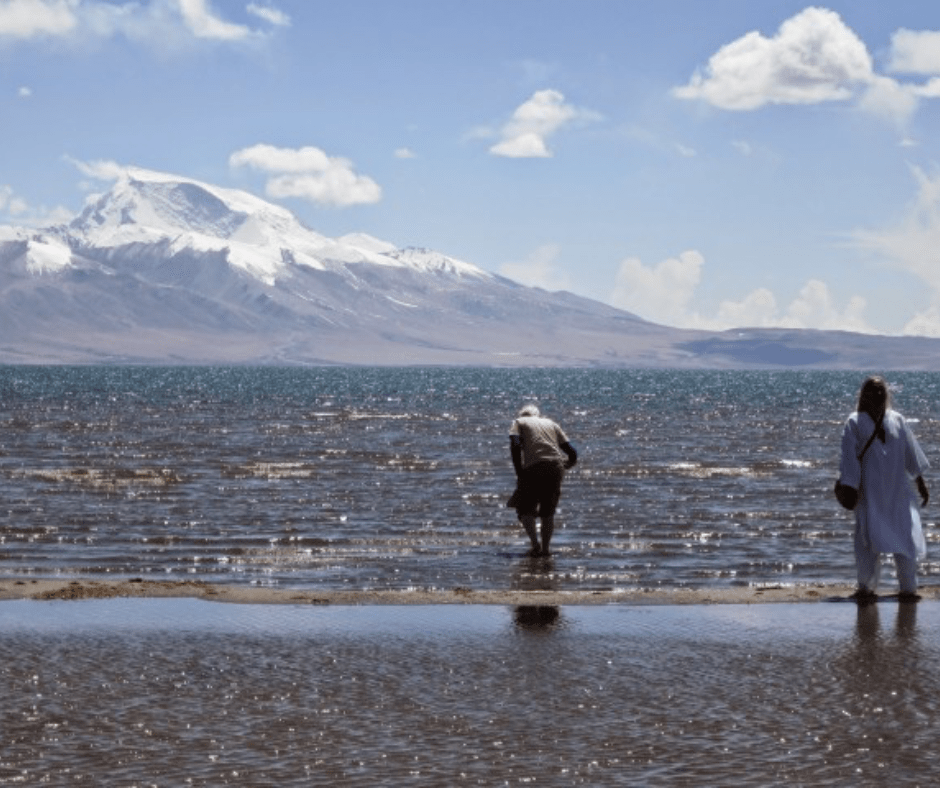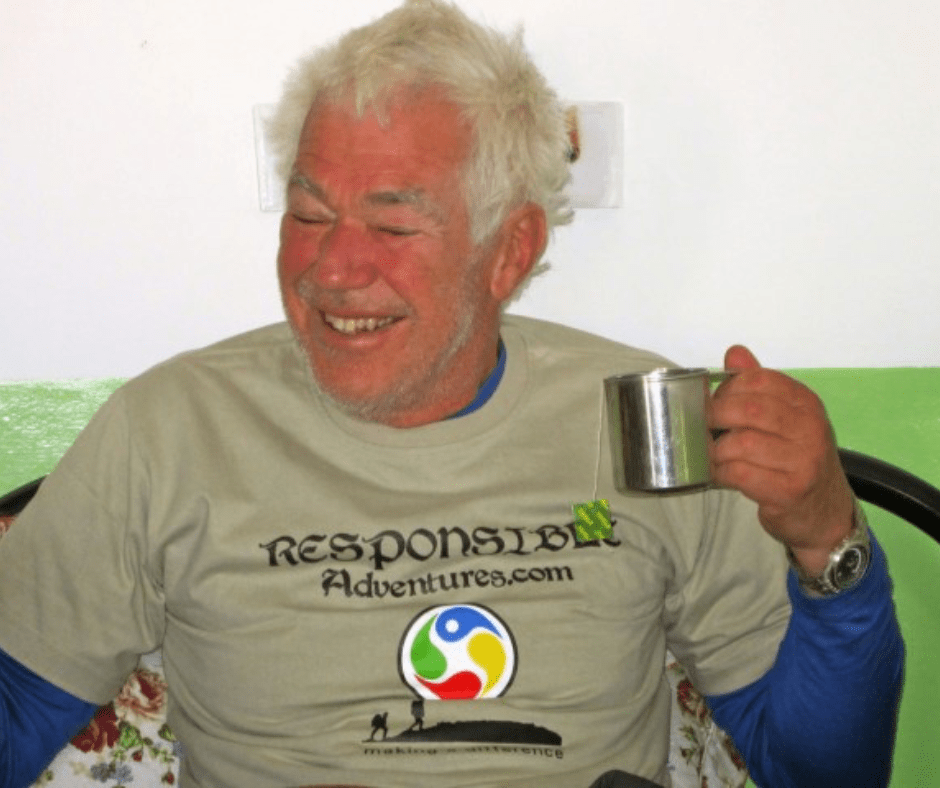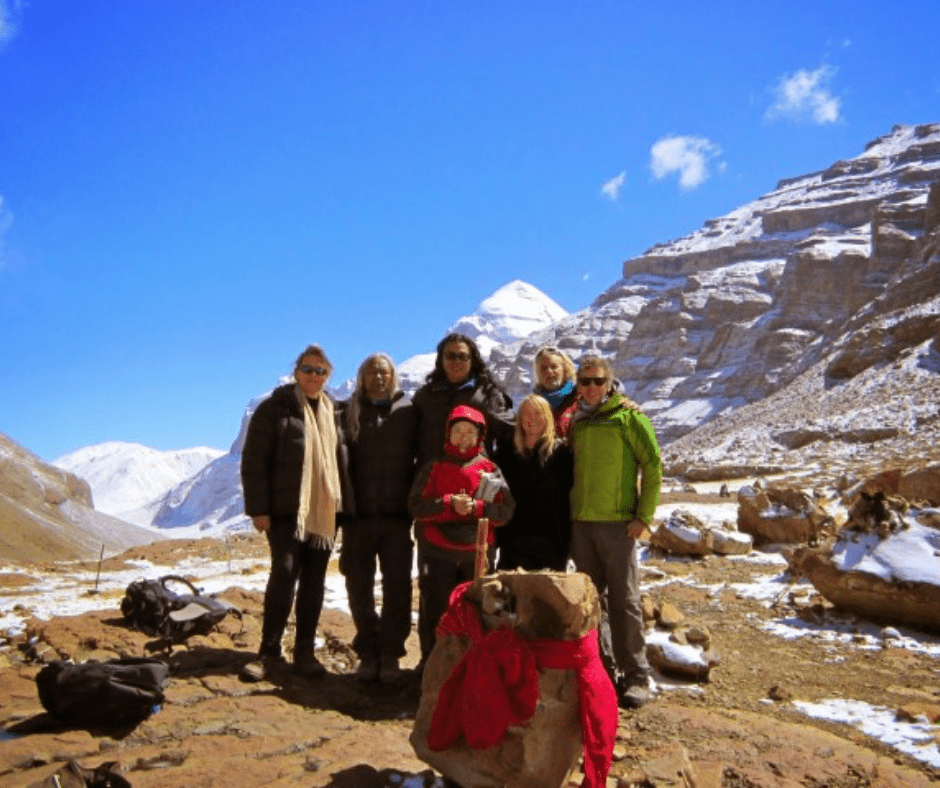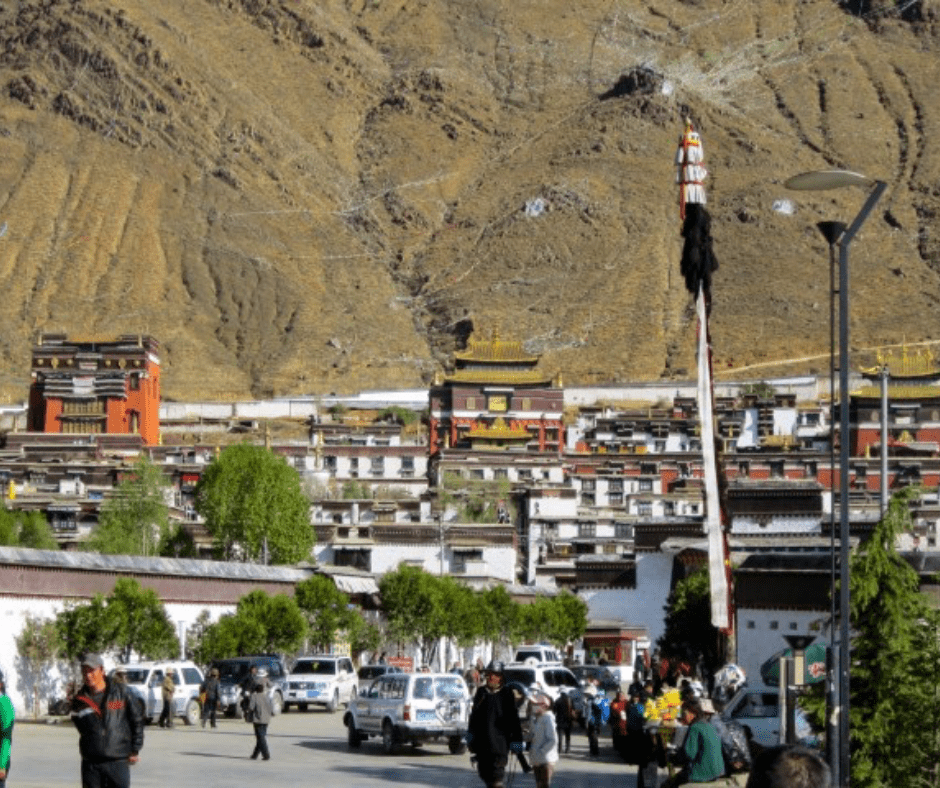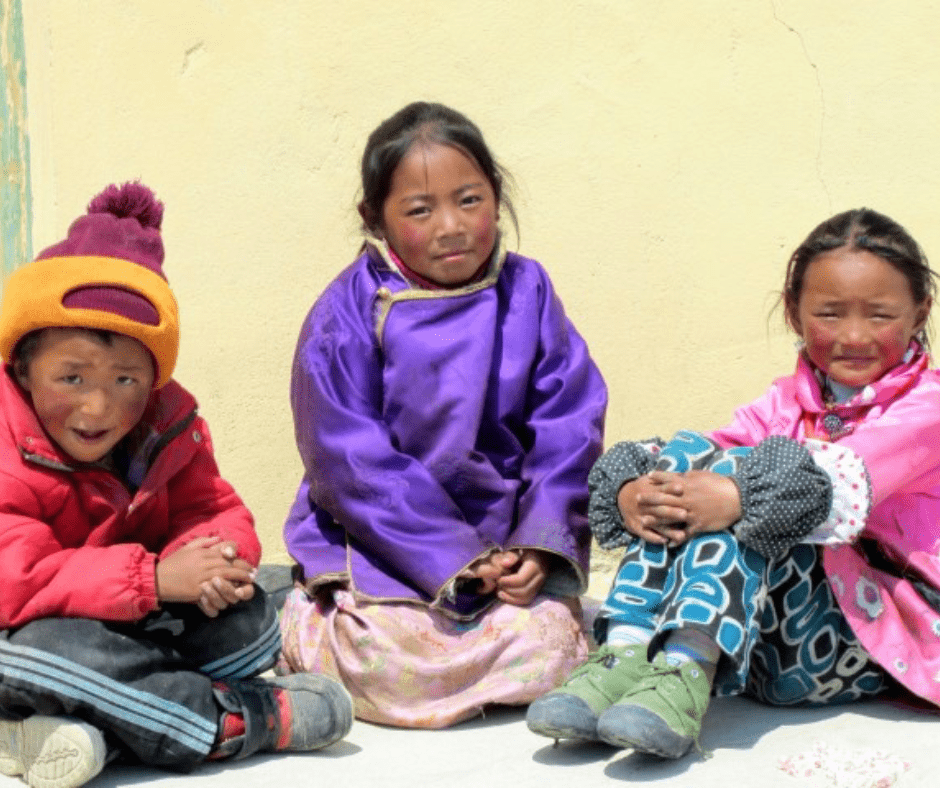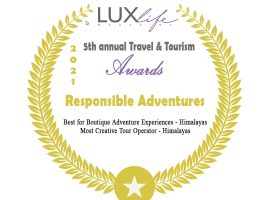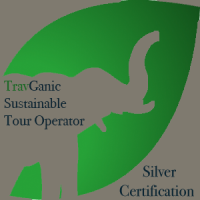Lhasa tour and Mount Kailash
Trek Wellness Tour
May through October
On request
16 Days / 15 Nights
Min. 4 / Max 12 Trekkers
Challenging
Boutique Hotels & Mountain Lodges
Max 5680 Mt
Lhasa Tour and Circuit of Mount Kailash, the sacred mountain of Tibet
Mount Kailash is known as the holy mountain of Tibet and the spiritual universe’s centre to millions of Tibetans. The mountain is one of the world’s most elusive and exotic pilgrimage sites, and because of its remote location on the plateau, it’s only visited by a few thousand pilgrims per year.
At Responsible Adventures, we are experts in the area and are happy to provide a once-in-a-lifetime pilgrimage for individuals, groups, and families. We start the trip with a few days of touring Lhasa’s capital city and local towns of Gyantse and Shigatse, which is an experience in itself and helps to acclimatize you for the journey ahead.
We then drive out to Mount Kailash, hopefully arriving at Darchen or Lake Manasarovar on a full moon day, which are the best days to visit Mount Kailash because of the auspicious nature of the full moon in many cultures.
As with all our treks, you are accompanied by an expert trek leader during your excursion, as well as trekking chefs who ensure you are fed the healthiest and best food throughout, and your trip is not only safe but also fun.
Itinerary
Our airport representative will meet you and transfer you to the hotel—the remainder of the afternoon/evening at leisure.
You have a day of sightseeing, and some last-minute purchases for the trip as our Tibet travel permits get processed today.
This morning we are driven to the airport for the flight to Lhasa. We will book you on the same flight with everyone because you must arrive in Tibet together due to the group permit.
You will be on one of the best mountain flights in the world. The flight path takes us along the eastern Himalayas and traverses into the Tibetan plateau between mount Everest and Makalu. You will be transferred to the city on arrival at Lhasa Airport. It would help if you took it slow and easy when you arrived in Lhasa due to the high altitude. Overnight Hotel Altitude: 3670 meters.
The following two days are scheduled to absorb the rich and ancient cultural history of Lhasa. We visit the Jokhang, Norbulingka (the Summer Palace of the Dalai Lama), and the grand Potala Palace. We also see the nearby Drepung and Sera monasteries. Barkhor, The Old City of Lhasa, was built around the most sacred temple in Tibet, the Jokhang.
Overnight Hotel, Altitude: 3670 meters
The following two days are scheduled to absorb the rich and ancient cultural history of Lhasa. We visit the Jokhang, Norbulingka (the Summer Palace of the Dalai Lama), and the grand Potala Palace. We also see the nearby Drepung and Sera monasteries. Barkhor, The Old City of Lhasa, was built around the most sacred temple in Tibet, the Jokhang.
Overnight Hotel, Altitude: 3670 meters
Today we commence our drive across the mountainous Tibetan plateau towards Kailash. The journey from Lhasa to Darchen, the base of the Kailash, is approximately 1300kms. The newly imposed lower speed limit on the highways outside of Lhasa gives us plenty of time to take in the remarkable views! We drive down the Kyichu Valley from Lhasa to the Yarlung Tsangpo (Brahmaputra) before ascending to the Khamba La – Pass at 4900m. In the forefront, the views are exceptional of the vast freshwater Yamdrok Tsho or Turquoise Lake; to the south, the snow-capped range merges with the main Himalayan chain. We drive along the lake before crossing the Karo La- pass at 5200 meters to reach Gyantse. Finally, we visit the tremendous octagonal chorten, the Kumbum (or Pango Chorten). It was built in 1444 on a scale of four levels, each holding separate chapels. Note: While we attempt to stick to the printed itinerary, travel in Tibet is unpredictable by nature, and a flexible plan is always required.
Drive: 290km, 8-9hours. Overnight: Gyantse Hotel or similar. Altitude: 3,900m
We visit the famous Tashilhunpo Monastery in Shigatse. It was founded in 1447 by the first Dalai Lama. The abbot of Tashilhunpo has been called the Panchen Lama (literally meaning ‘The Great Scholar’) since the fifth Dalai Lama’s time in 1642. The Panchen Lama became the chief spiritual and temporal adviser over time. Drive: 90km, 3 hours Altitude: 3800 meters. Overnight Hotel.
We head west across the Tibetan plateau to the trading town of Saga from Shigatse. The drive to Kailash is a spectacular but demanding adventure through the roof of the world. Roads in Tibet have improved tremendously since the new highway was constructed. As a result, you might find the road conditions different from what you are used to back home. They can be very slow-moving, but this is all part of the adventure in this remote part of the Himalayas. However, the journey used to be even slower in bone-wrecking conditions before the year 2010.
Drive: 450km, 9-10 hours Altitude: 4500m Overnight: Saga Hotel or similar
The drive today is demanding. First, we will pass through the settlement of Pharyang before crossing several sandy sections en route to Chiu Gompa on the shores of Lake Mansarovar. This is our stop for the night.
Drive: 240km, 5 hours Altitude: 4,600m Overnight: basic guesthouse/lodge.
Today’s drive is short this morning, so there is no rush. Instead, we can take our time to enjoy the truly spectacular views of Lake Manasarovar, also called Mapam Yumtso. This high-altitude freshwater lake is fed by snowmelt from the Kailash and Gurla Mandata Glaciers near Mount Kailash. The lake is revered as a sacred site in four religions, namely Bön, Buddhism, Hinduism, and Jainism.
We continue on the last section of this unforgettable and epic journey after soaking up the magnificent views of the Himalayas by driving across the widespread Tibetan plateau to Darchen, a small village in Purang County. Darchen is located right in front of the divine mountain, Mount Kailash. It is the starting point for pilgrimages in the region.
Drive: 40km, 1-hour Altitude: 4,575m Overnight Hotel.
We begin our circumambulation – the ‘kora,’ around the base of Mount Kailash. We follow the pilgrims’ steps, leading us past a dome outcrop known as “Gateway”, from where the valley widens below the Dri Puk Monastery. Please note that the accommodation during the trek is basic; after the government’s ban on camping, there are no alternatives.
Drive: 30 minutes. Trek: 6 hours Altitude: 5,000m Overnight: basic local lodge (no single supplement availability)
Today, we trek the second stage and climb to the top of Dolma La – pass 5600 meters. The trail passes an area referred to as Shive Tsho, marked by an extensive collection of discarded clothing. This is where pilgrims are said to undertake a symbolic death by leaving an old clothing item while proceeding to the pass. The final 200m climb to the pass is not extremely difficult. The pilgrims pay homage to the gods of the pass for a safe journey and good weather when they reach the top. It is an extraordinary moment to reach the top at any time of the year. Finally, we head down the valley to the small monastery of Zutul Puk. The place known as the miracle cave signifies the spot where the famous Buddhist teacher Milarepa performed miracles in a contest with the high priest of the Bon Po, the original animistic religion of Tibet predating Buddhism. Milarepa won the competition but permitted the Bon Po devotees to continue their pilgrimage around Mt Kailash.
Trek: 10 hours walking Altitude: 4900 meters. Overnight: basic local lodge (no single supplement availability)
It is 4 hours from Zutul Puk to the open plains and past the lines of mani walls and prayer flags, back to the small town of Darchen. We have the afternoon to savour our final views of Kailash. We are reminded of the holiness of this area for the countless pilgrims that venture here each year. Finally, we have a long drive to Saga.
Drive: 8-10 hours drive Trek: 3 hours Altitude: 4,575m Overnight Hotel
Today we head for the border town of Kyirong. It is a seven-hour drive to the border town from Saga. The Chinese government opened this new route to ensure that trade between Nepal and China could continue smoothly. The border post was opened to tourists in 2017, allowing travel along this legendary overland route to recommence. This road will surely add to the sense of adventure as it crosses new parts of tourism to both Tibet and Nepal.
Drive: 7 hours Altitude: 4,130m Overnight Hotel
We cross the border into Nepal today and complete our journey from Lhasa via the Langtang region. It is a fitting end to an epic overland journey.
Drive: 160 km, 6 hours Altitude: 1330m Overnight Hotel
International departure. You will be driven to the Tribhuvan International airport three hours before your international flight.
Inclusions
- Airport pick-up and drop-off (four in total for the entire trip)
- Boutique three or four-star hotel in Kathmandu. Upgrade to a five-star hotel for an extra US$700 per room for four nights. This cost is shared between two persons.
- Accommodation on a twin-sharing basis with breakfast at three-star hotels in Tibet on days 3, 4, 5, 6, 7, and 14 (total of six nights). Upgrade to the deluxe hotel for an extra US$750 per room for five nights. This cost is shared between two persons.
- Two-person tent during camping. You can book a bed in the guest house — one bed for six nights, US$100. Note: The guesthouses’ standard varies from rustic to some of the newer guesthouses with double-glazed windows.
- Expert tour leader or hire Raj
- Trekking chef and helper according to group size
- Freshly cooked breakfast and dinner with packed lunches for the day. Healthiest meals in the Himalayas.
- Kitchen, dining, and toilet tents
- Van or bus according to group size
- English-speaking Tibetan guide
- Monastery entrance fees
- Portable altitude chamber
- Kailash permit and normal Tibet permit with entrance fees for sightseeing of monuments as indicated.
Exclusions
- Travel and medical insurance
- Rescue evacuation cost in case of emergency
- International airfare
- Extra cost incurred in the event of landslide for hiring additional transportation or porterage on the Arniko Highway (INR 500 – 700 per person approx.)
- Soft/hard beverages, photography charges, porterage at the airports/hotels, laundry, tips, telephone calls, etc. and any other expenses of personal nature
- Yak/Pony hiring charges for riding during Kailash Parikarma
- Any other item which is not mentioned in our inclusions lists above

